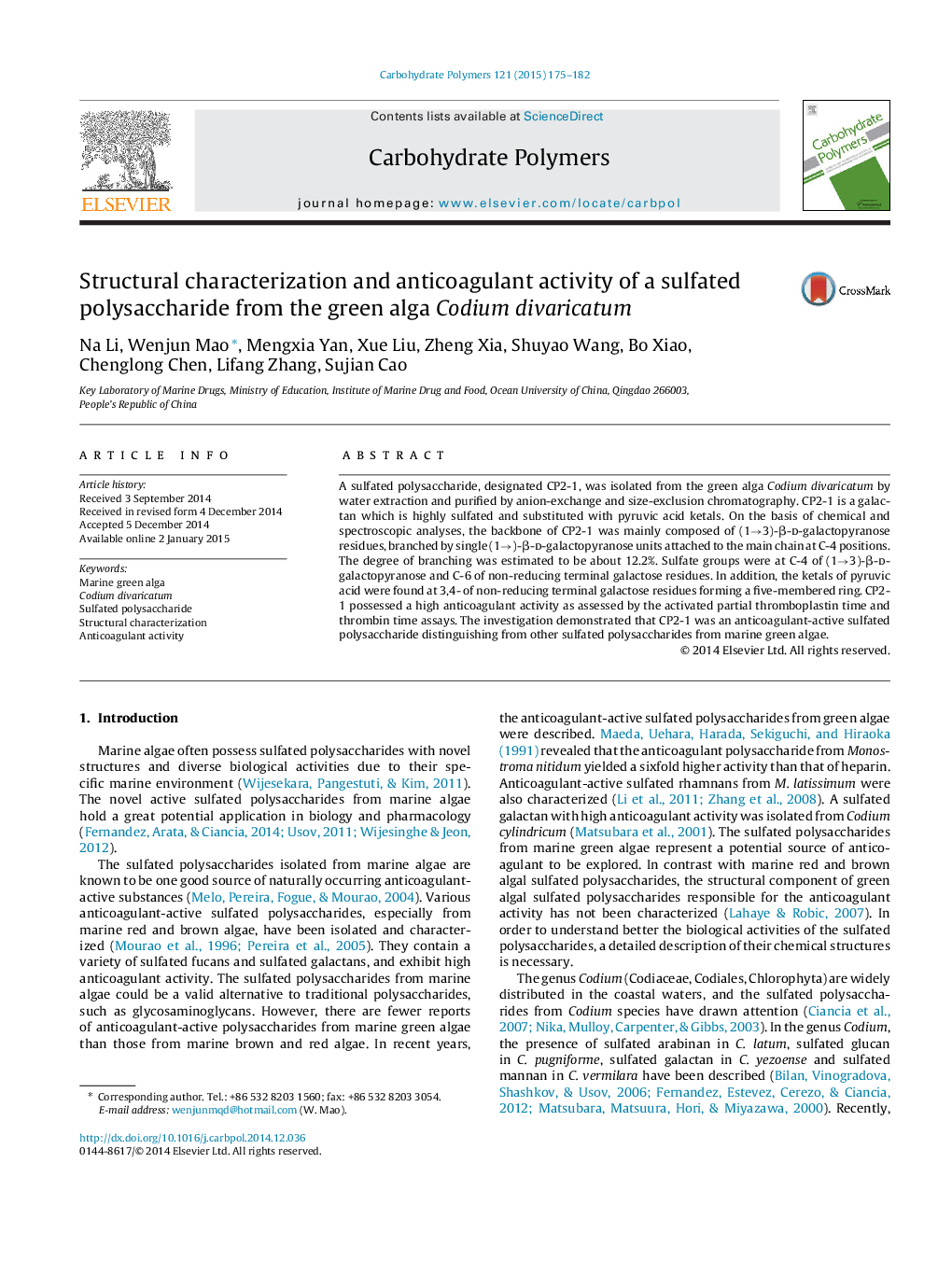| Article ID | Journal | Published Year | Pages | File Type |
|---|---|---|---|---|
| 1383252 | Carbohydrate Polymers | 2015 | 8 Pages |
•A pyruvated galactan sulfate CP2-1 was isolated from green alga Codium divaricatum.•Backbone of CP2-1 consisted of galactopyranose residues with a small degree of branching.•Pyruvate formed five-membered cyclic ketals with O-3 and O-4 of galactose residues.•CP2-1 possessed a high anticoagulant activity in vitro.
A sulfated polysaccharide, designated CP2-1, was isolated from the green alga Codium divaricatum by water extraction and purified by anion-exchange and size-exclusion chromatography. CP2-1 is a galactan which is highly sulfated and substituted with pyruvic acid ketals. On the basis of chemical and spectroscopic analyses, the backbone of CP2-1 was mainly composed of (1→3)-β-d-galactopyranose residues, branched by single (1→)-β-d-galactopyranose units attached to the main chain at C-4 positions. The degree of branching was estimated to be about 12.2%. Sulfate groups were at C-4 of (1→3)-β-d-galactopyranose and C-6 of non-reducing terminal galactose residues. In addition, the ketals of pyruvic acid were found at 3,4- of non-reducing terminal galactose residues forming a five-membered ring. CP2-1 possessed a high anticoagulant activity as assessed by the activated partial thromboplastin time and thrombin time assays. The investigation demonstrated that CP2-1 was an anticoagulant-active sulfated polysaccharide distinguishing from other sulfated polysaccharides from marine green algae.
